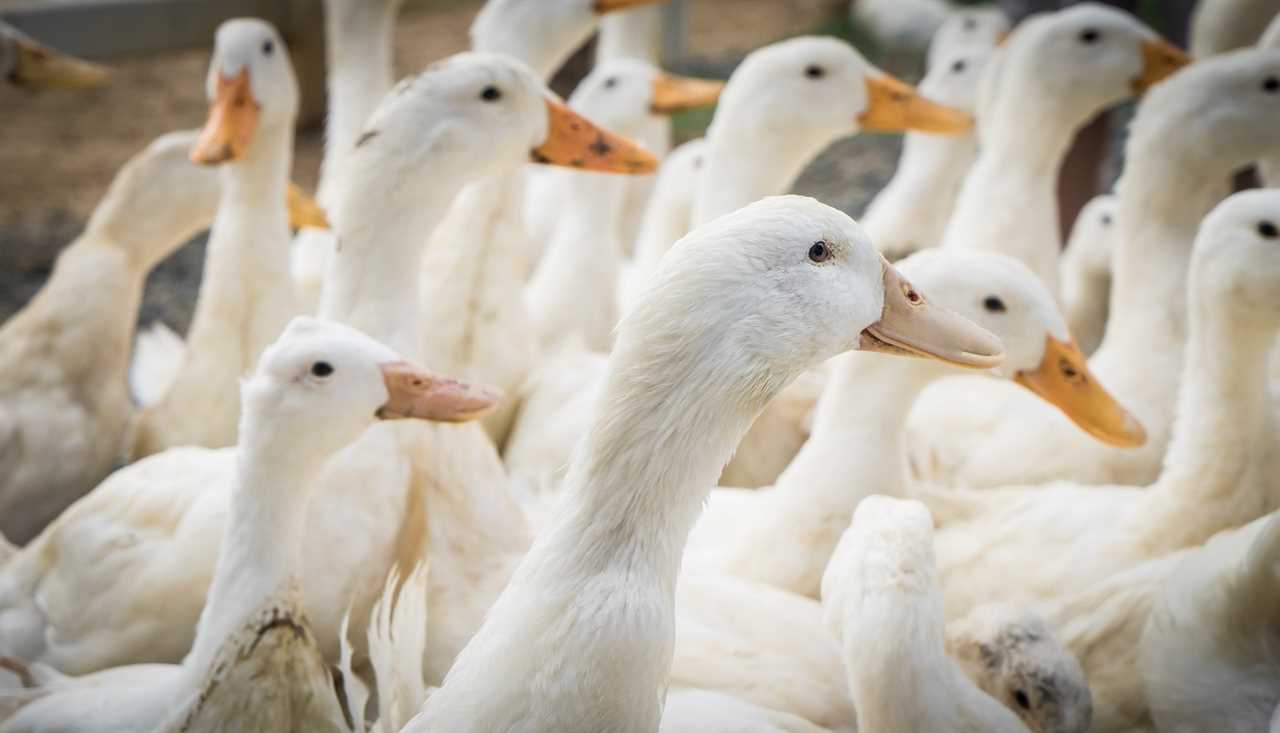---------------------------------------

In late January, scientists at the World Organization for Animal Health (WOAH) reported the first cases of H5N9 avian influenza in the U.S., on a duck farm in California.
The latest strain isn’t a surprise, say public-health experts, since influenza takes different forms in different species and is constantly mutating. But the appearance of H5N9 is still concerning, especially in light of the ongoing outbreaks in chickens and cows of H5N1.
[time-brightcove not-tgx=”true”]
Here’s what to know.
Why bird flu is so rampant right now
“We’ve never seen a global spread of avian influenza virus like this,” says Michael Osterholm, director of the Center for Infectious Disease Research and Policy at the University of Minnesota. “We’ve seen an explosion in the number of outbreaks in poultry and duck operations over the course of recent weeks. This reflects the fact that there is so much H5N1 in migrating waterfowl.”
There are about 40 million migratory aquatic waterfowl in North America, Osterholm says—which means there are plenty of potential bird-flu hosts, whose poop spreads disease.
Read More: Scientists Are Starting to Track Bird Flu in Farm Wastewater
“What we are seeing more and more are outbreaks in poultry operations because this virus is common in the environment and it’s blowing around,” he says. “That’s different from anything we’ve seen before.”
How H5N9 is different from H5N1
H5N9 is “not commonly seen in poultry in general,” says Eman Anis, assistant professor at the University of Pennsylvania School of Veterinary Medicine. (Anis is part of a lab that conducts national testing of poultry samples for avian influenza.)
The virus is the result of a combination of H5N1, H7N9, and H9N2, according to researchers in China who studied samples isolated from bird markets in 2015. At the time, the scientists said it wasn’t clear how adept the virus was at infecting people—which remains the case today—but warned it was “imperative to assess the risk of emergence of this novel reassortant virus with potential transmissibility to public health.”
[video id=h7ByYR2R autostart="viewable"]
Why scientists are worried about H5N9
When H5N9 was recently detected in ducks, H5N1 was detected along with it.
That’s concerning, since viruses are able to combine and reassemble their genetic material. With so much H5N1 circulating, the danger of that strain coming into contact with other avian viruses—like H5N9—increases the chances that new, mutant strains can emerge. The fear is that one of those reassortments could result in a strain that easily infects and spreads among people.
Read More: Trump’s Freeze on Foreign Aid Will Make Diseases Surge
By allowing bird flu to spread among animals mostly unchecked, “We are increasing the risk of something really terrible happening,” says Dr. Ashish Jha, dean of the Brown University School of Public Health. “When you take risks, sometimes you get lucky. I always say you can close your eyes and cross a busy street, and you might not get hit by a car. But that doesn’t mean it’s a good idea.”
Concern for the future
“What absolutely needs to be happening right now is we need a global coordinated strategy,” Jha says. “Migratory waterfowl do not observe national boundaries, and any surveillance for [avian influenza] has to be done in a multi-national way.”
President Trump’s decision to withdraw the U.S. from the World Health Organization (WHO), and his instructions for federal employees not to work with anyone from the global health agency, will make such a coordinated effort nearly impossible, Jha says—and that it will heighten the chances that viruses, including bird flu, cause larger outbreaks.
-----------------------------------------
By: Alice Park
Title: What to Know About the H5N9 Bird Flu
Sourced From: time.com/7212763/what-is-h5n9-bird-flu/
Published Date: Tue, 04 Feb 2025 21:04:36 +0000
Read More
Did you miss our previous article...
https://prohealthsciences.com/general-health-and-wellness/how-to-reduce-the-wait-time-for-an-appointment-with-a-doctor
 General Health and WellnessFitness and ExerciseSupplements and VitaminsPandemic NewsVideosPrivacy PolicyTerms And Conditions
General Health and WellnessFitness and ExerciseSupplements and VitaminsPandemic NewsVideosPrivacy PolicyTerms And Conditions
